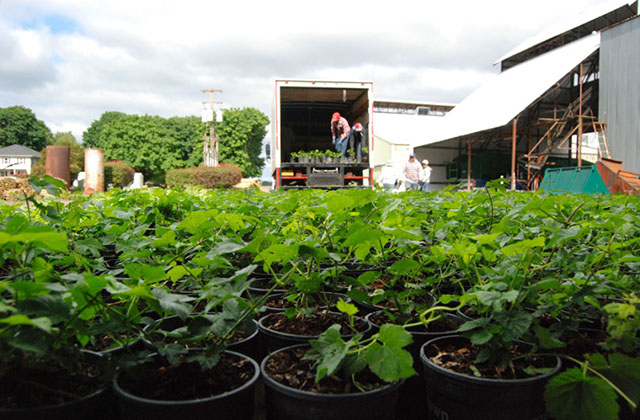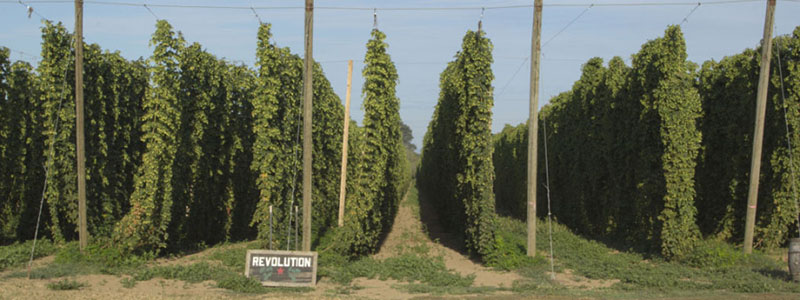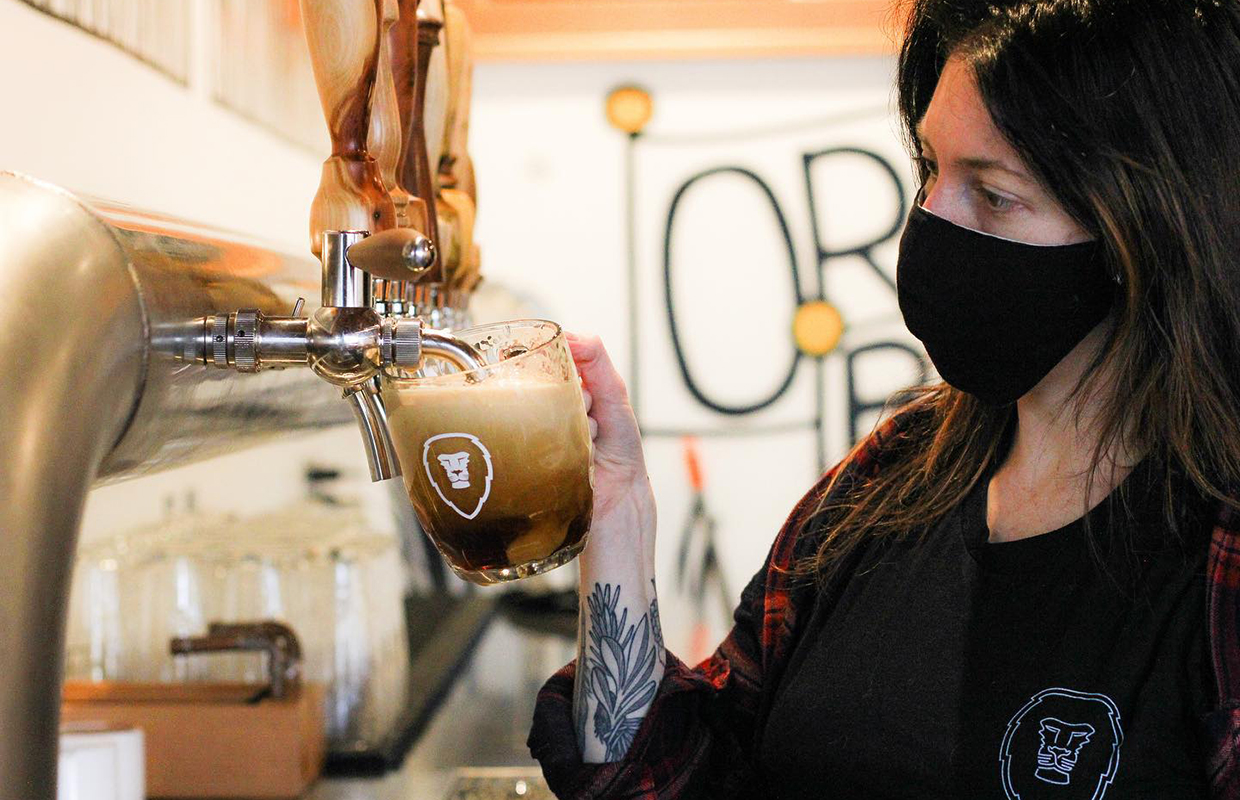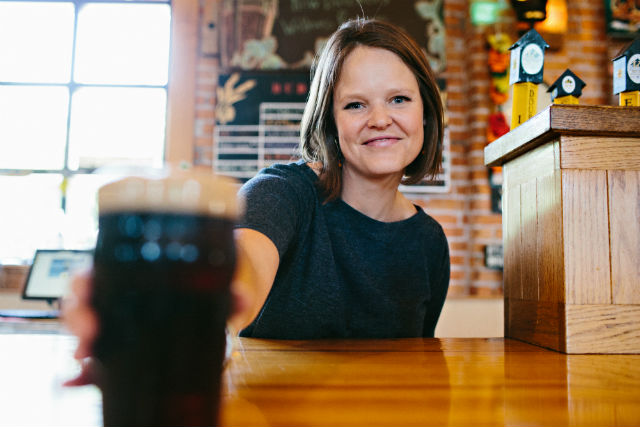
It wasn’t economically viable. It’s hard and dirty work. But it’s satisfying to go from the ground to the glass for some of the beers produced by Oregon’s Rogue Ales.
The brewery is now in its eighth year of farming near it’s Newport, Oregon facility, harvesting hops, barley, rye, pumpkins, hazelnuts, berries, honey and so much more on the hundreds of acres of land in two different areas of the state.
Brett Joyce, the president of Rogue, talked with Brewer Magazine recently talked about the background of the farm idea, the future for it and the beer that comes from the brewery’s ground.

Brewer: How does a brewery get involved with a farm in the first place, and why?
Joyce: The genesis goes back to the hop crisis in 2008. We didn’t have to think too much about it before that. All of a sudden that changed almost overnight. We wanted to think of a way to not have to tell our brewmaster (John “More Hops” Maier) that he can’t have more hops. It was us hedging against this happening again. I think it was a “necessity is the mother of invention” for us and it began our journey into farming. We grabbed the Yellow Pages for hop farmers and cold called local Oregon farmers to let us work with them. One farmer that called us back, and someone who has been a great partner for us and we have been able to work with, was the Coleman family. We have been able to grow hops and it’s expanded into so many other things.
Brewer: So it was a hop farm to start, but now you guys have gone to be able to include so many things that can go into not just beer, but also distilling. How has that evolution gone on?
Joyce: As we started to enjoy the process and learning and creativity, it just extended into pondering into how we might do it with other crops. It was pretty natural and that led us into barley since it was an obvious pairing.
Brewer: How much was it financially and how did you find the capital to put this?
Joyce: Really you can’t even think of the cost at some level. The most expensive ingredients we use are the ones we grow ourselves. People have asked over the years if we are trying to be vertically integrated and this is the furthest thing from efficiency and from a strategy of vertical integration. Economically it’s not the smartest thing in the world, but we just thought it would be fun and creative and do something that had not been done before. We swallowed hard to pay for that, but coming out the other side and being farmers for eight-plus years, we are glad that we did. It’s tough to take that leap, but we are all about dare, risk and dreams. This is something we needed to do and eight years later, I’m glad that we did.
Brewer: There is a sustainability satisfaction that doesn’t equal dollars and cents. I don’t think brewers go into it thinking of it that way, but it can be satisfying.
Joyce: It’s raw and it’s dirty and honest and it’s so real. You can’t fake farming. We just like to do it and share with the world as much as possible and let people decide their own thoughts. We hope there is a respect for how real this is and we are doing it the hard way. On the whole, people have come to appreciate it.
Brewer: Can you explain the ways to hire staffing for the farm? It must be a little different.
Joyce: On the one hand, you need people that can do that work of farming. The other side is the tasting room. So you have to find people that can be at the tasting room and have the ability not just to serve the beer but conduct tours. That’s been something interesting in how we hire for there. We need people to tell the whole story of what we are doing. That’s different than a standard bartender.
Brewer: What do you tell breweries that ask about this endeavor?
Joyce: There is no secret to it. You just have to have the wherewithal to put the project together. When people come to see us they scratch their heads and wonder if we really are that crazy to do this. What they see is cost and hassle and overhead and headache and logistics and operational challenges, which is all accurate. We are happy to talk and tell them about it, but it’s not rocket science. It takes commitment and being in it for the long term. We didn’t get hops for a couple of years. You have to be patient and invested in the idea. There is no return tomorrow.
Brewer: What is the “State of the Farm” right now? How are things going this summer?
Joyce: We are reorganizing the hop fields. Everything is growing and beautiful. If you can pick a month, July and August is great. We added two more varieties, for a total of 10 but we are always looking for strains to play with. To be in the tasting room and see the hops 10 yards from where the beer is being drank is great. You can smell the hops that are in your beer. It’s the whole ground to glass experience.
Brewer: What is a “success story” from the farm?
Joyce: Our “7 Hop” IPA that we started to make a few years ago has been really fun for us. I don’t know why it took so long for us to figure this out, we have all these varieties, why don’t we just make one beer with all seven varieties. It was a simple concept and our brewmaster made this great IPA that is 7.77 ABV. When it hit, the locals, and other people freaked out. It became a fan and staff favorite almost overnight. It was surprising that beer could supplant so many people’s long-time favorites. The beer itself is a perfect representation the hops and barley we have. It’s got a big malt balance. It’s a beautiful hop and barley farm in one glass and it’s been very rewarding over the last few years.






2 Trackbacks / Pingbacks